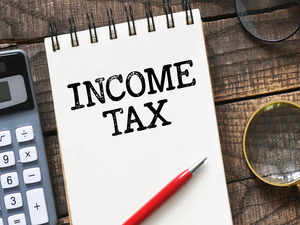Synopsis
“It is being reviewed to assess effectiveness,” said an official, adding that there is a line of thinking that it should be made optional for taxpayers. Another official said the idea is to address challenges in its implementation to ease compliance further for taxpayers. A final call will be taken shortly, the official said. The scheme was introduced on April 1, 2021, to reduce the human interface in tax disputes and assessments.
 Getty Images
Getty ImagesIndia is reviewing the ‘faceless’ income tax (I-T) assessment mechanism to make it more taxpayer-friendly, following suggestions that the programme can be made more effective.
A hybrid formula is being examined that could allow taxpayers to pick either the faceless scheme or in-person resolution, people familiar with the development told ET.
“It is being reviewed to assess effectiveness,” said an official, adding that there is a line of thinking that it should be made optional for taxpayers. Another official said the idea is to address challenges in its implementation to ease compliance further for taxpayers. A final call will be taken shortly, the official said.
The scheme was introduced on April 1, 2021, to reduce the human interface in tax disputes and assessments. Under the system, the income tax department processes returns, issues refunds, conducts tax assessments and scrutiny, and manages appeals. The assessing officer is assigned cases at random, without following geographical jurisdiction.
More hybrid form mooted
Though the assessment system through video conferencing is said to have stabilised, there has been growing demand from taxpayers — both individual and business — to allow some in-person interface.
The income tax department’s field formations have also been pushing for a more hybrid form that will allow for optimal and effective use of resources.

Devil in the details
Experts said assessment is a complex exercise and communication between the assessee and tax officer can be more effective if interactive.
“Especially in the case of large and complex matters requiring detailed explanations and huge amount of data to be produced, it has been observed that sufficient time has sometimes not been given for taxpayers to prepare and upload their facts and arguments, resulting in unwarranted adjustments,” said Sudhir Kapadia, partner, tax and regulatory services, EY.
Kapadia pointed out that once a matter goes into first-level appeal, it joins a long queue, resulting in a backlog of cases at the commissioner of income tax (appeals) level, where the mechanism has faced its most critical challenge.
“There is a crying need to expedite these long-pending appeals by prioritising cases, enabling technology support to the commissioner, and effective real-time monitoring of disposals by the CBDT (Central Board of Direct Taxes),” he said.
Similarly, in the faceless system, there have been several instances of misalignment between the portal of the jurisdictional assessing officer and the systems of the Central Processing Centre, as a result of which refunds are stuck interminably without redressal, he said.
Matters of expertise
Taxpayers have also complained of difficulties in explaining over video conferencing the working of a business to assessing officers who may not be aware of such details or have the expertise, leading to adverse orders being passed. For instance, startups or fundhouses face this issue the most, tax experts told ET. Individuals have also raised similar issues with virtual interfaces.
Taxpayers are facing certain challenges that need to be addressed to make the overall faceless scheme more effective, said Akhil Chandna, partner, direct tax, Grant Thornton Bharat. “Such challenges include lack of specific option to seek adjournment, difficulty in uploading large files online, and not providing adequate time to taxpayers to respond to notices.”
Mainstay Tax Advisors partner Kuldip Kumar cited the time the process takes. “For faceless appeals, there is currently a long pendency in disposal of appeals, even after submission of final response by taxpayers,” Kumar said.

